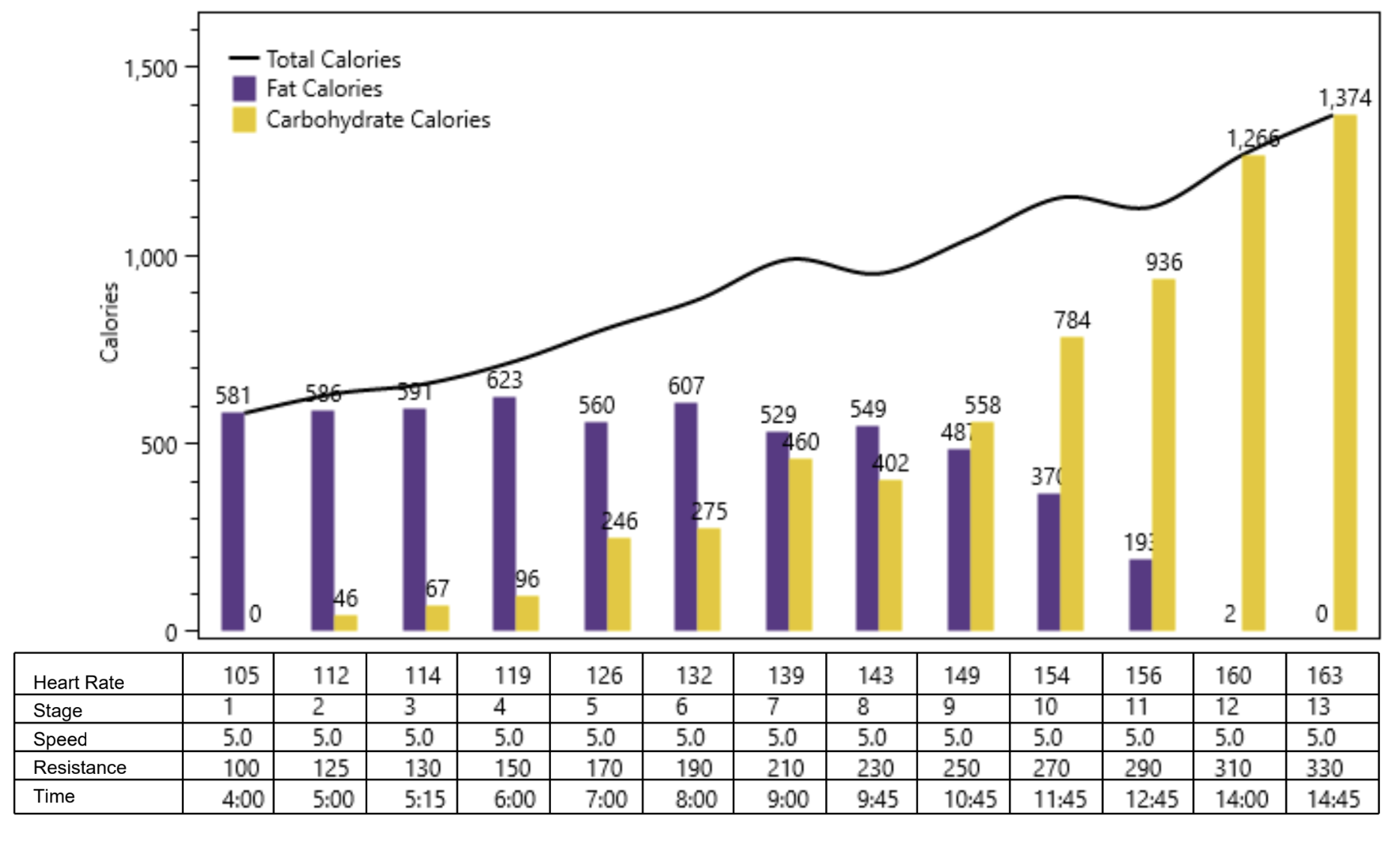Why can’t I reduce my body fat?
Are you ready to see what might be holding you back from burning fat effectively? Let’s dive into some fascinating data from metabolic and VO2 max testing that explains why many people struggle to tap into their fat stores, even with regular exercise.
Why Many People Can't Burn Fat
Through metabolic and VO2 max testing, I've found that many individuals—whether very fit or trying to lose weight—are almost entirely carbohydrate-dependent. Even during low-intensity exercise at lower heart rates, their bodies rely almost exclusively on carbs for fuel. This happens because their mitochondria, the energy powerhouses of cells, are not efficiently switching over to burn fat.
This creates a frustrating situation: they can store fat but can't burn it. When they eat carbohydrates beyond their immediate needs, the excess glucose is converted into triglycerides and stored as fat. But when they exercise, their bodies don’t access that stored fat for energy, leaving them trapped in a cycle of fat storage with no fat burning.
Take a look at this graph, which shows a clear example of someone with this issue. Even at the start of the test, she is burning over 80% carbs and almost no fat! As her exercise intensity goes up, so does carb utilization.
The Hidden Reason for Carbohydrate Dependency
Interestingly, this issue isn't limited to people with metabolic health problems. For instance, the graph above is from the test of a young, healthy, and very fit woman. She prefers higher-intensity workouts, spending most of her time in heart rate zones 3 and 4. As a result, her body relies heavily on carbohydrates for energy, even during low-intensity activity. I see this pattern frequently when I test patients who prefer HIIT classes, Orange Theory, and harder Peloton workouts.
I also often see this pattern in individuals with emerging metabolic issues, such as weight gain, elevated blood sugar (often detected through a hemoglobin A1c test) or increased LDL cholesterol and triglycerides.
Now, let’s compare this with another patient:
What Does Metabolic Flexibility Look Like?
This second patient demonstrates metabolic flexibility—the ability to shift between burning carbs during intense exercise and burning fat at rest or during light exercise. The key difference? He spends significant time training at his "fat max" heart rate, which we identified through his VO2 max test.
When he first started, he was also carb-dependent. However, by focusing on low-intensity exercise (zone 2) and often training in a fasted state before breakfast, he expanded his body’s ability to burn fat efficiently.
Why Training at "Fat Max" Matters
Zone 2 exercise, where you reach your fat max heart rate, is where the real metabolic benefits of exercise happen. Some exercise physiologists even refer to zones 3 and 4 as the “NBZ”—the No Benefit Zone—when it comes to metabolic health. While those zones offer heart and lung benefits, they don’t do much for improving metabolic health or high end performance.
Working out in zone 2 stimulates your body to produce more mitochondria, which become more fat-adapted. Additionally, your body grows new blood vessels in your muscles, improving oxygen and nutrient supply during exercise. These changes significantly enhance your overall fitness and fat-burning capability.
The Foundation of Wellness: Metabolic Health
Metabolic health is the foundation of total wellness. If your cells can't function properly, your body can't perform at its best. By understanding your heart rate zones, "fat max" heart rate, and VO2 max, you can take control of your metabolic health and unlock your body’s ability to burn fat.
Want to learn more? If you’re interested in discovering your heart rate zones, fat max, and VO2 max, we’d love to help! Reach out to our care coordinator at anne@riseprecisionmedicine.com, and we’ll guide you on your journey to better health.


